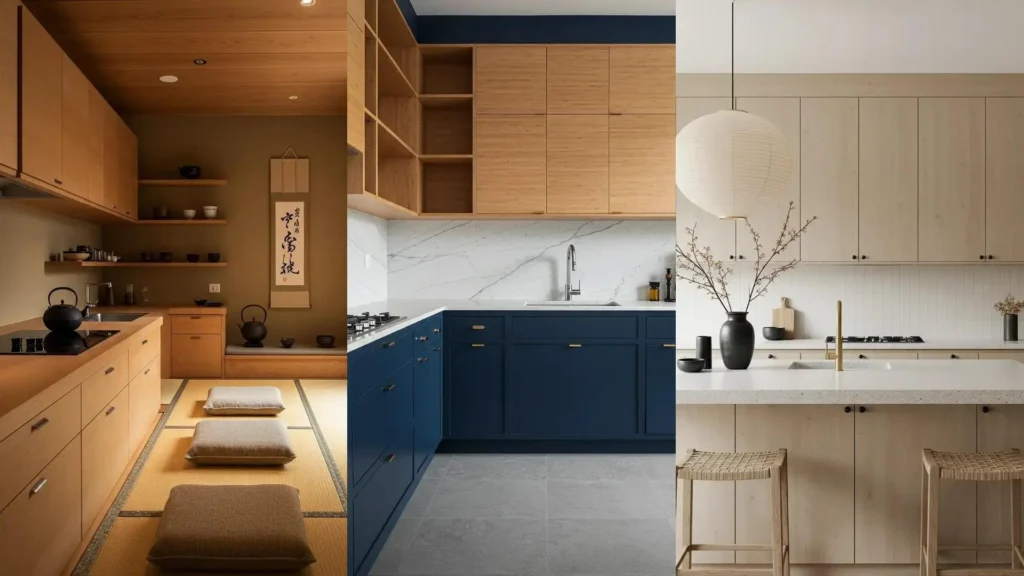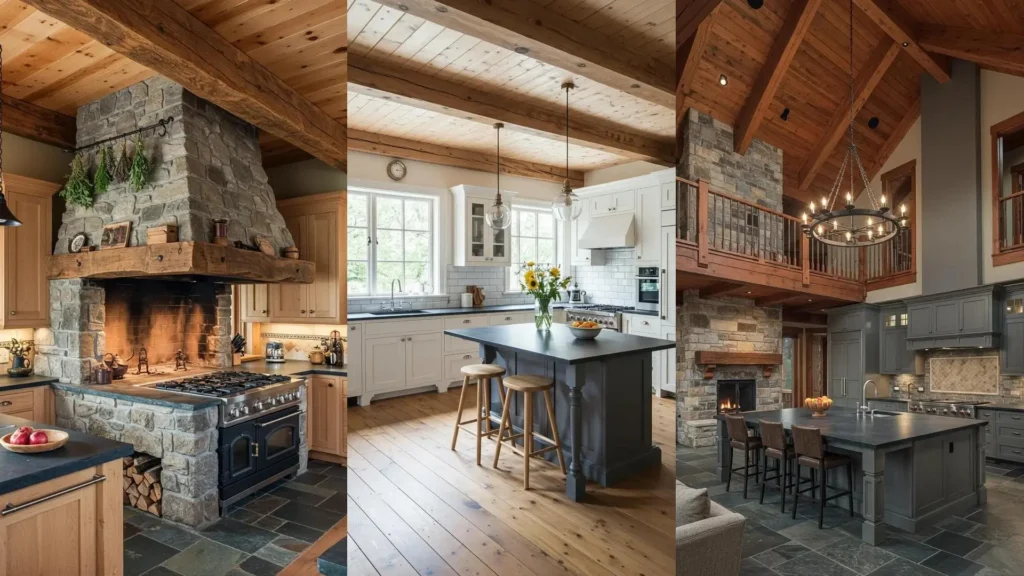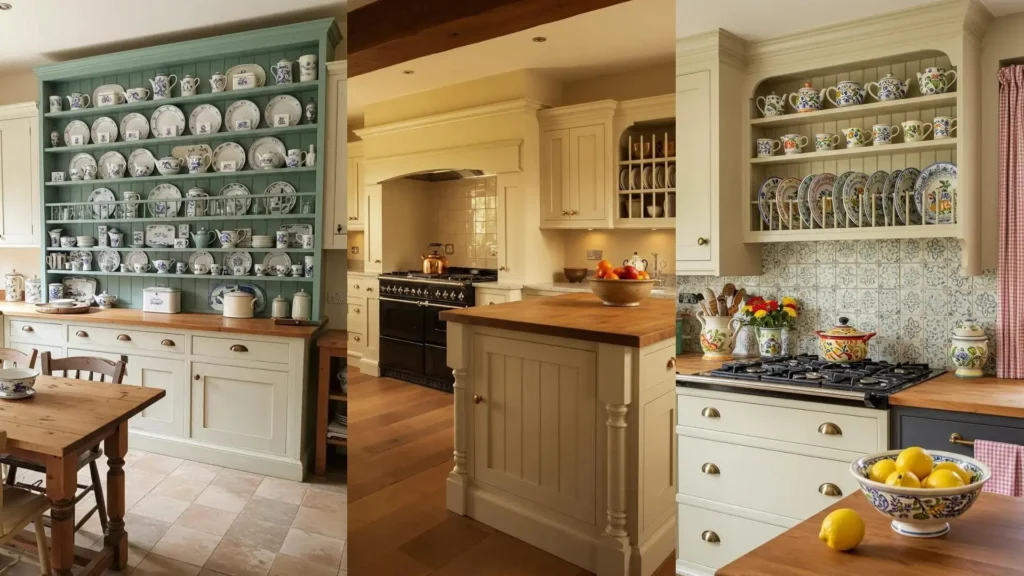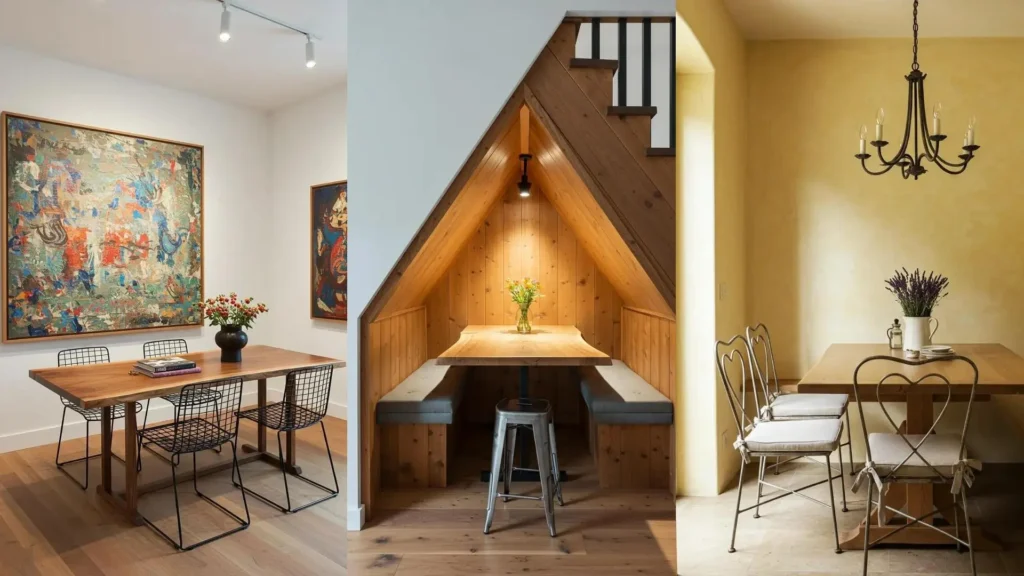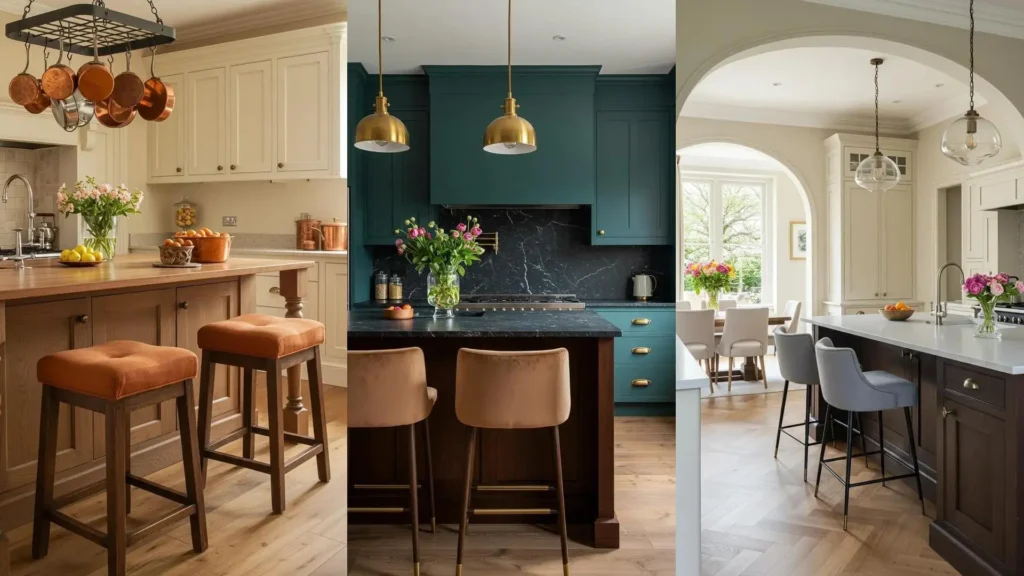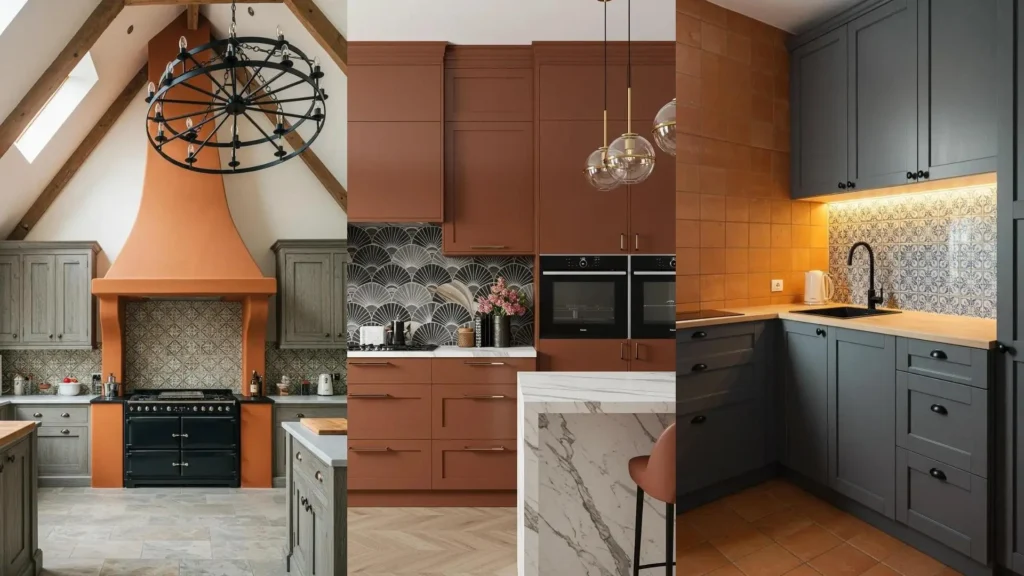Your kitchen is more than a room for cooking; it’s the warm, beating heart of your home.
If you’re drawn to spaces that feel both calm and inviting, the Japandi style offers a beautiful path forward. It’s not about choosing between Japanese minimalism and Scandinavian warmth, but about mindfully blending the two to create a kitchen that feels uniquely yours—serene, functional, and deeply personal.
Here, we’ll explore how you can use natural materials, thoughtful lighting, and clean lines to design a space that quiets the noise of the outside world and welcomes you in.
1. The Power of a Single, Sculptural Light

Anchor your kitchen’s design with one significant, sculptural light fixture, like this oversized paper lantern.
Its soft, diffused glow immediately balances the clean lines of the cabinetry, while its scale creates an intentional focal point without adding clutter.
This simple choice draws the eye upward, making the entire space feel more considered and airy.
For a similar effect, you could explore pendants made of woven rattan, linen, or even frosted glass to find the texture that best suits your home.
2. Embrace Mood with Layered Black Finishes

Don’t be afraid to use black as a primary color for a sophisticated and intimate atmosphere.
The key to success is layering different textures: notice the subtle grain of the stained wood cabinets, the matte countertop, and the smooth, dark backsplash.
This variation prevents the color from feeling flat or heavy.
Essential to this look is warm, under-cabinet lighting, which highlights the textural differences and ensures the workspace is bright and functional, creating a cocoon of calm in your kitchen.
Pairing these dark surfaces with ebony cabinets and minimal hardware maintains a sleek, modern edge.
3. Introduce Softness with a Curved Island

Break up the straight lines of a typical kitchen with a curved island.
This introduction of soft geometry makes the space feel more organic and approachable.
Here, vertical wood fluting adds another layer of texture and rhythm, transforming the island from a simple workspace into a beautiful piece of furniture.
A soft green, glossy tile adds a touch of color and reflects light, embodying the cozy element of Scandinavian design.
4. Balance Minimalism with Open Wood Shelving

In a narrow galley kitchen, maintain a sense of openness with handleless, flat-panel cabinets in a light color.
To prevent the look from becoming too sterile, introduce warmth and personality with thick, open wood shelving.
This provides the perfect opportunity for curated display, blending Japanese intentionality with Scandinavian practicality.
By limiting the items on your shelves to a coordinated color palette, you achieve a space that feels both personal and peacefully uncluttered, which is a key element in chic small apartment decor ideas.
5. Ground Your Space with Earthy Textures
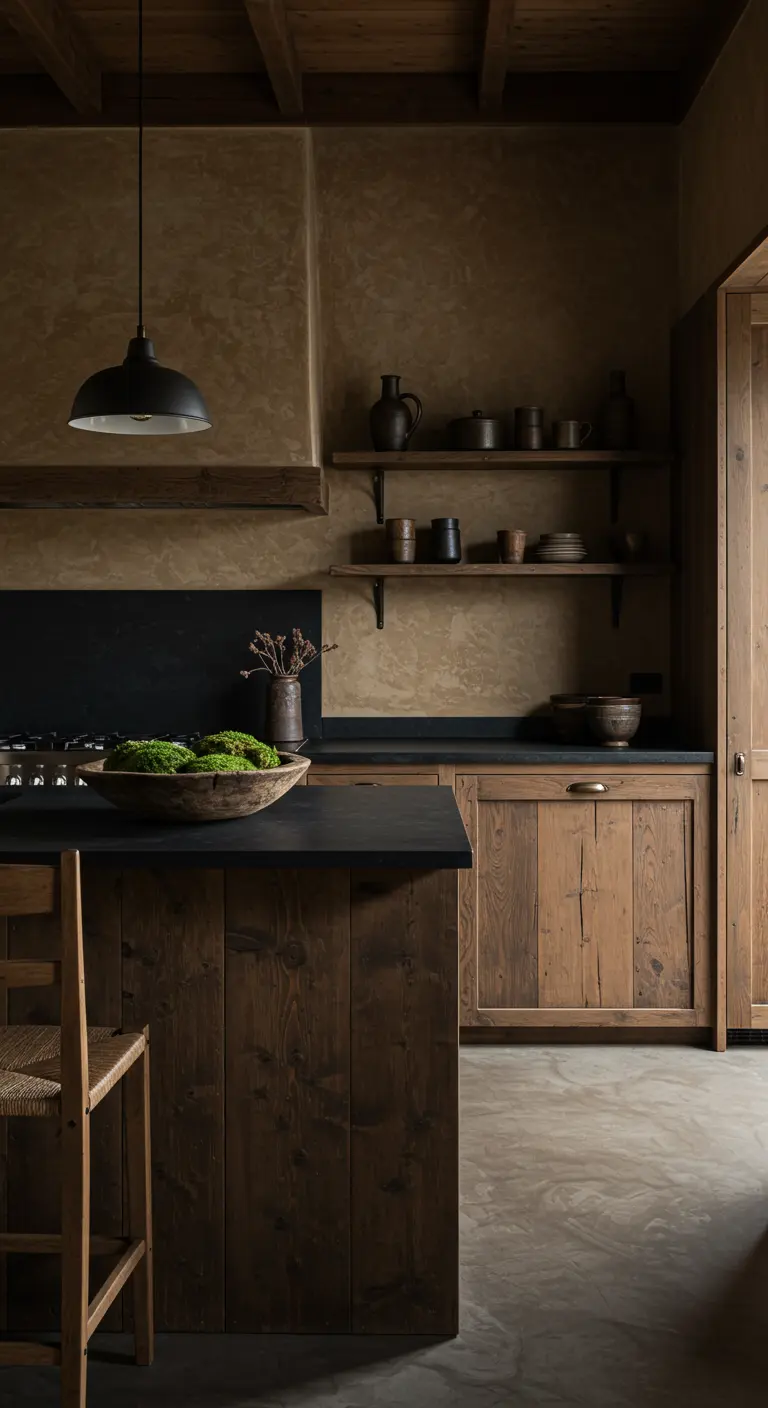
Create a kitchen with deep, lasting character by embracing imperfect, natural textures.
Combine the rugged beauty of reclaimed or rough-hewn wood cabinets with the soft, tactile quality of plaster or limewash walls.
This wabi-sabi approach celebrates the beauty in imperfection and creates a space that feels ancient and calming.
Matte black countertops and simple, unadorned shelving provide a clean, modern contrast that keeps the look feeling current, resulting in beautiful modern rustic spaces.
6. Blend Traditions with a Modern Farmhouse Sink
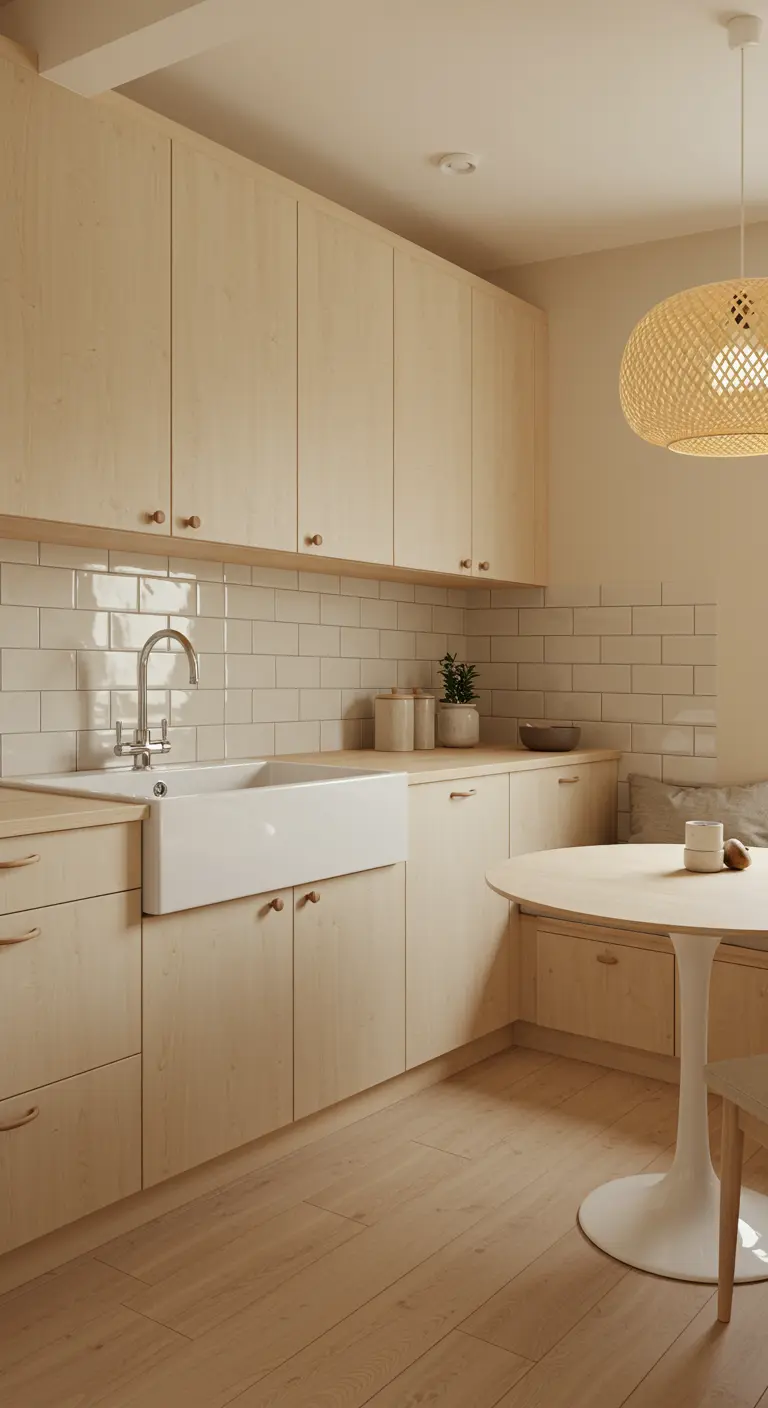
An apron-front or farmhouse sink can integrate beautifully into a minimalist Japandi kitchen.
Its substantial form provides a pleasing, functional anchor in the room.
To make it work, keep the surrounding elements simple: flat-panel light wood cabinets and understated hardware allow the sink to be a focal point without overwhelming the serene aesthetic.
This thoughtful mix is a hallmark of many successful modern farmhouse kitchens.
7. Create Contrast with Two-Tone Cabinetry
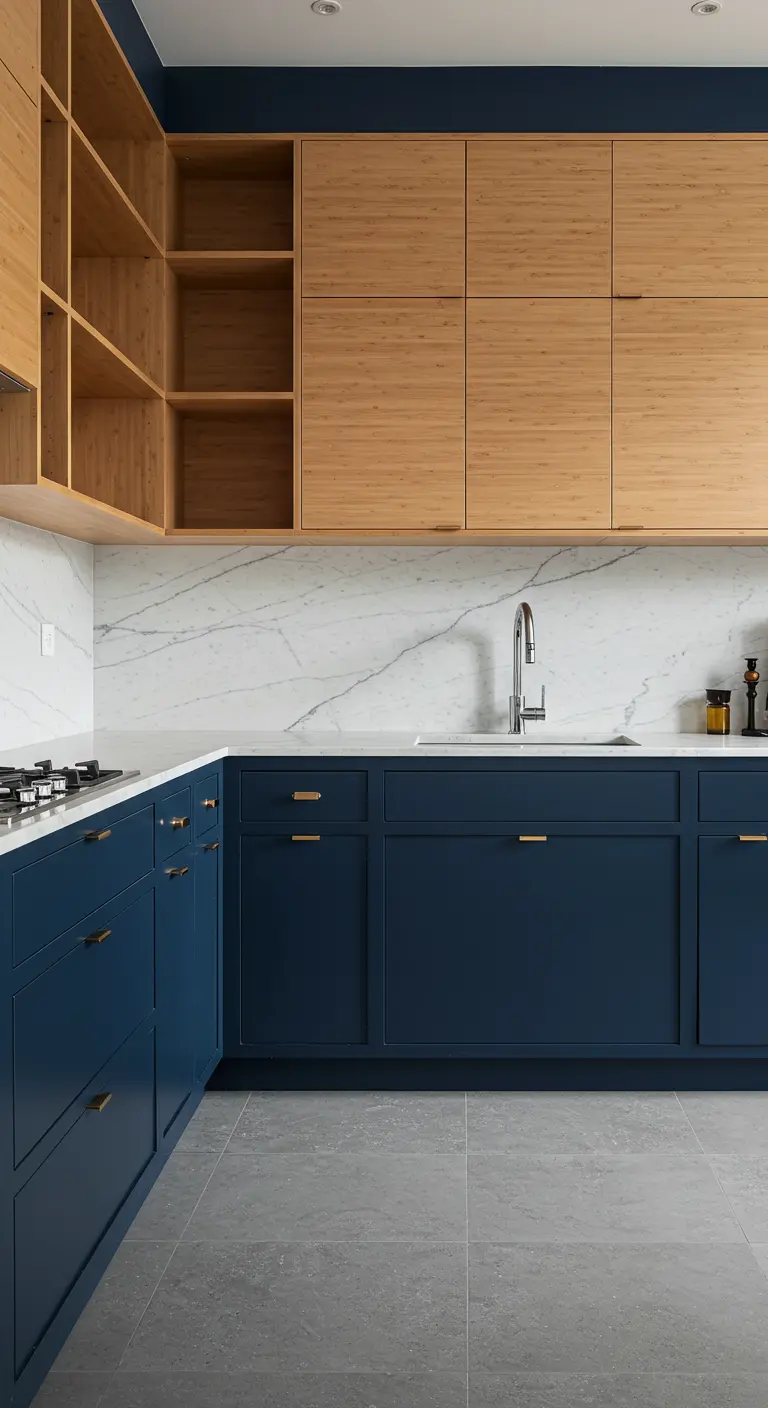
Add visual depth and interest to your kitchen by using a two-tone cabinet scheme.
Ground the space with a deep, saturated color like this rich navy for the lower cabinets. It provides a solid, comforting base.
Then, use a lighter, natural material like bamboo or light oak for the upper cabinets to create a feeling of height and airiness.
A continuous backsplash with a subtle, elegant pattern, such as this veined marble, is the perfect element to unify the upper and lower zones.
8. Frame Nature as Your Backsplash
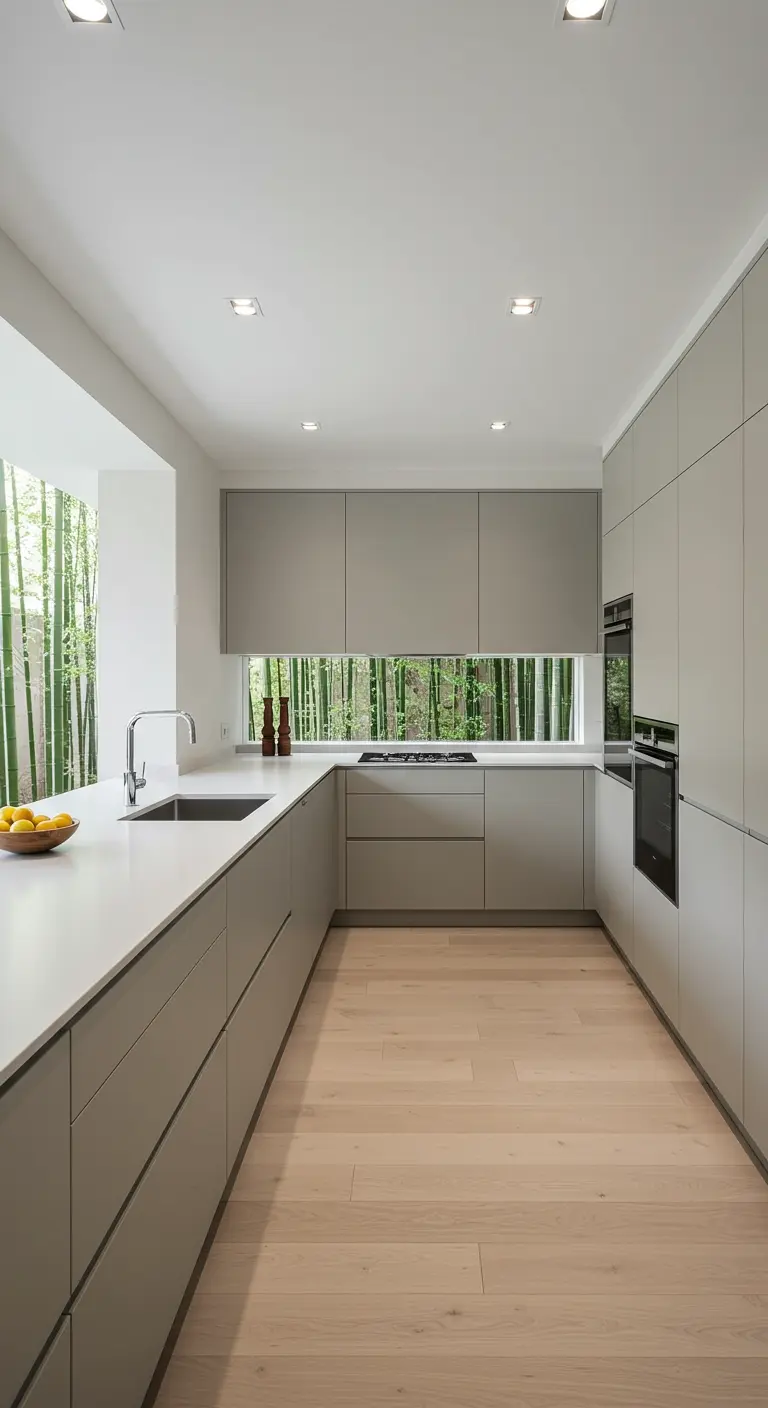
Let the view outside become the focal point of your kitchen by installing a long, horizontal window in place of a traditional backsplash.
This is a powerful way to incorporate biophilic design, blurring the line between inside and out and flooding your workspace with natural light.
To ensure the view remains the star, choose neutral, unobtrusive finishes for your countertops and cabinets. It transforms daily tasks into a more serene experience, aligning with nature-inspired urban garden themes.
9. Add Playful Shape with Scalloped Tiles
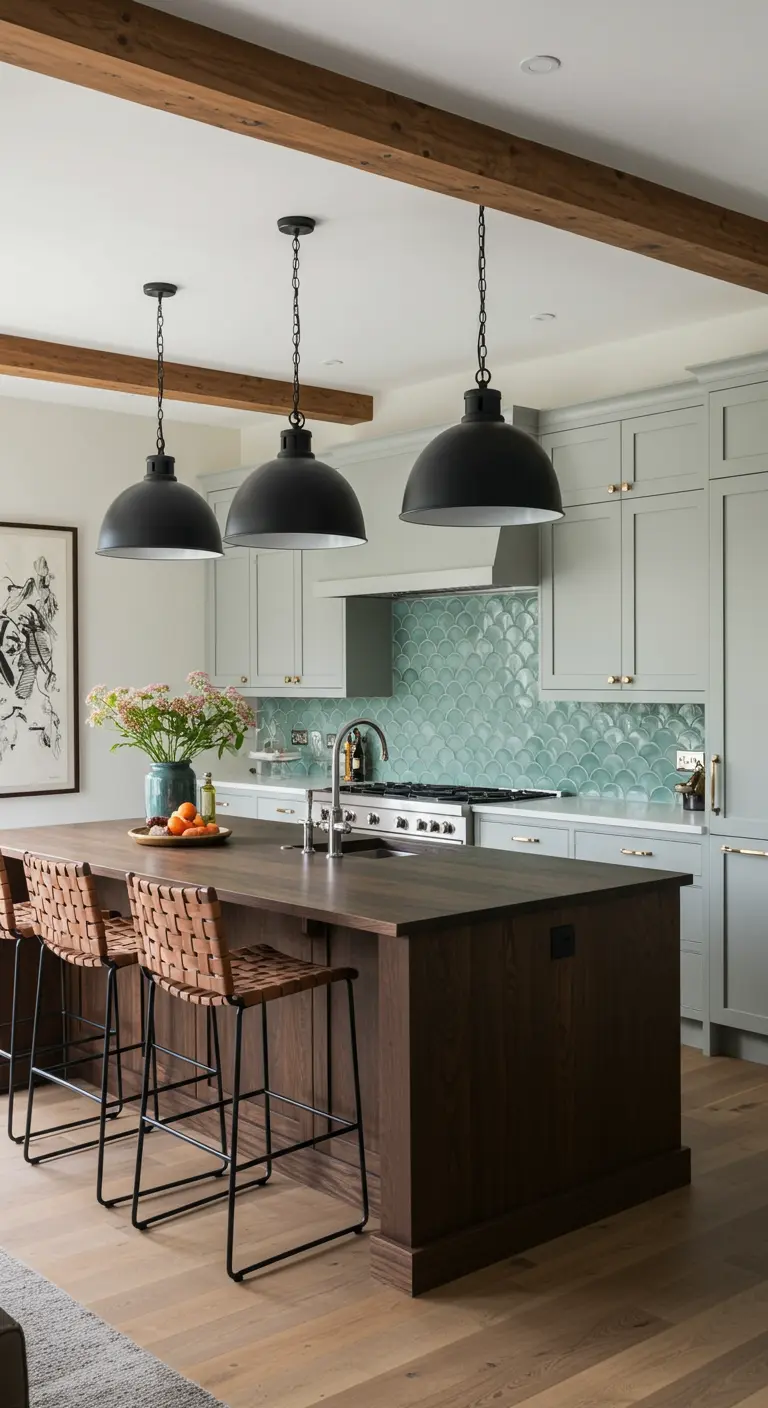
Introduce a soft, organic pattern to your kitchen with a scalloped or ‘fish scale’ tile backsplash.
The gentle, repeating curves offer a beautiful contrast to the straight lines of cabinetry and countertops, adding a touch of playful elegance.
In a soft, watery color, these aqua tiles evoke a sense of calm, natural movement.
This detail is an excellent way to add personality while maintaining a serene and cohesive color palette.
10. Make a Statement with a Monolithic Island

For a bold, minimalist statement, design your kitchen island as a single, sculptural form.
Using a material like concrete, microcement, or a solid surface that wraps seamlessly from the countertop down the sides achieves this powerful monolithic look.
It provides a cool, architectural counterpoint to the warmth of wood cabinets and earthenware.
This approach transforms a functional element into a piece of art, a principle often found in minimalist Zen bathrooms.
11. Marry Industrial Edge with Rustic Warmth
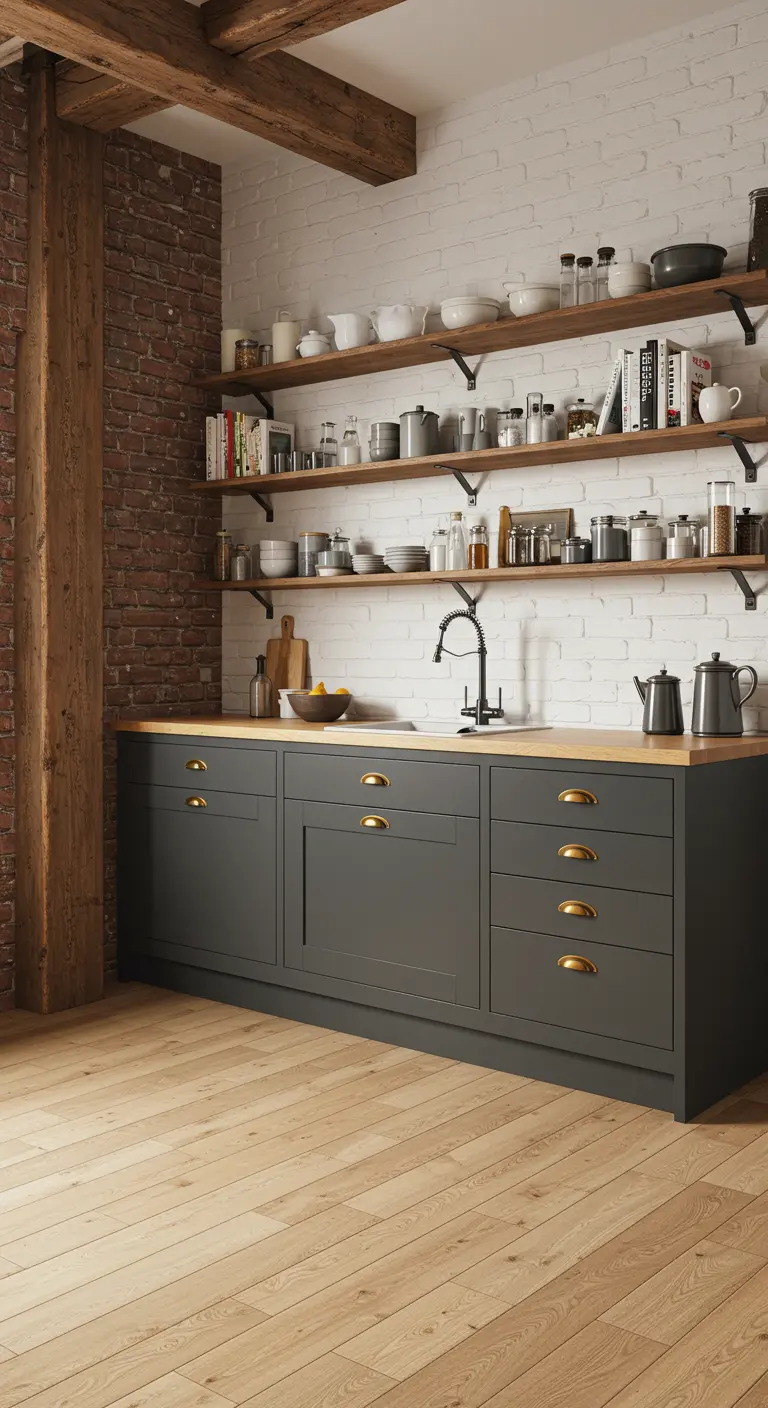
Japandi design beautifully accommodates other influences, like the raw texture of an exposed brick wall.
This industrial element adds a layer of history and grit that contrasts wonderfully with the clean, modern lines of dark grey Shaker-style cabinets.
A warm wood countertop and simple open shelving act as a visual bridge, uniting the rustic brick with the sleek cabinetry.
This blend is often seen in industrial loft-style dining spaces and works just as well in the kitchen.
12. Erase the Line Between Kitchen and Garden

Create a seamless transition between your kitchen and the outdoors by opening it up to a courtyard or garden.
A large sliding glass door allows the sights and sounds of nature to become part of your daily life, transforming the kitchen into a tranquil retreat.
Echo the natural elements of your garden indoors with materials like slate countertops and wood cabinets to strengthen the connection.
This creates a small, private zen garden feel that promotes calm and mindfulness.
13. Introduce Texture with Woven Cabinet Fronts

For an instant injection of warmth and texture, replace solid cabinet doors with panels featuring woven cane or rattan.
This detail adds a handcrafted, slightly bohemian feel that aligns with the cozy, natural-fiber-loving side of Scandinavian design.
Framed by simple wood and paired with a dark slate floor, these woven rattan accents make the cabinetry feel lighter and more breathable.
14. Warm Minimalism with an Earth-Tone Wall
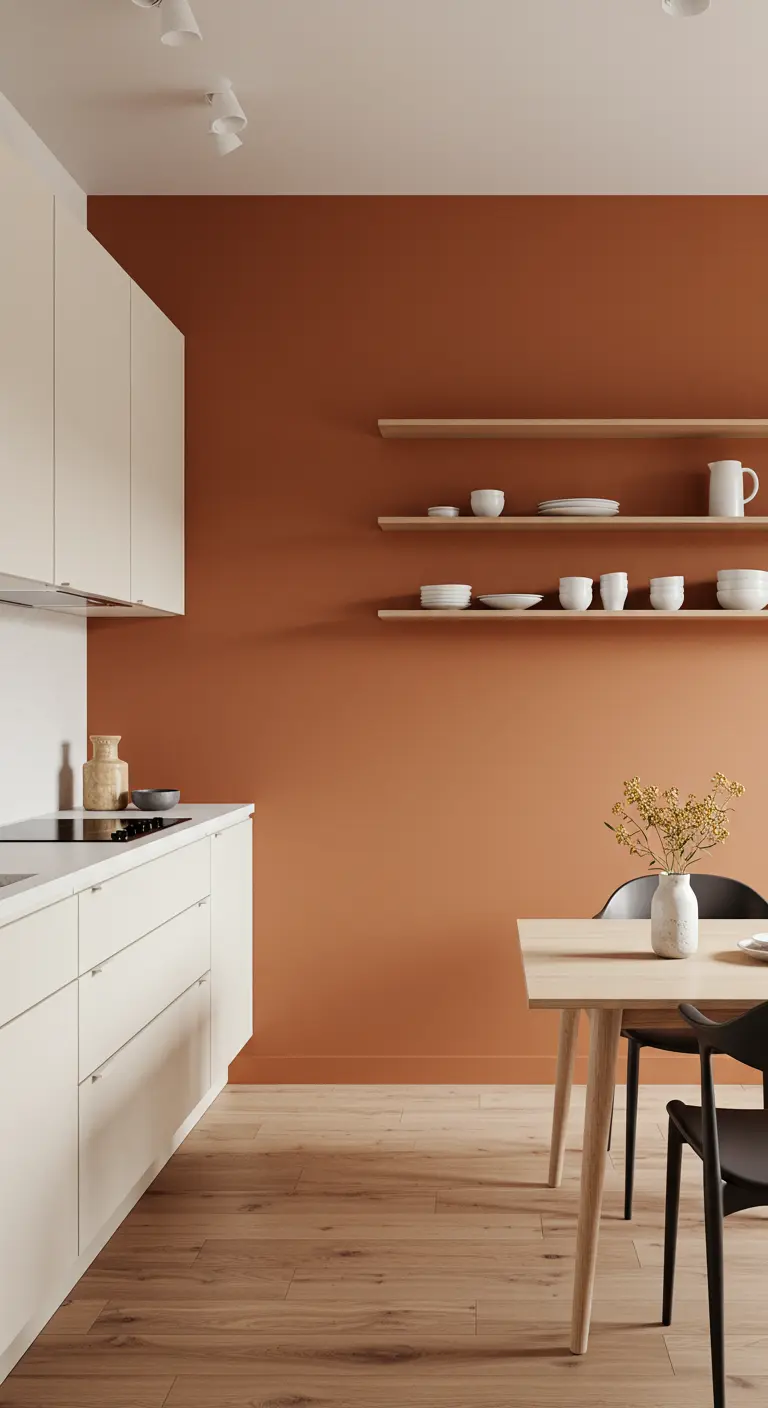
A purely minimalist kitchen can sometimes feel stark.
Introduce immediate warmth and character by painting a feature wall in a rich, earthy hue like terracotta.
This simple act provides a stunning, warm backdrop for pale cabinetry and floating shelves, making your carefully chosen ceramics and glassware stand out.
It’s a high-impact strategy for adding personality without adding any physical clutter, much like using terracotta pots in a desert-inspired space.
15. Elevate with Traditional Details and Pattern
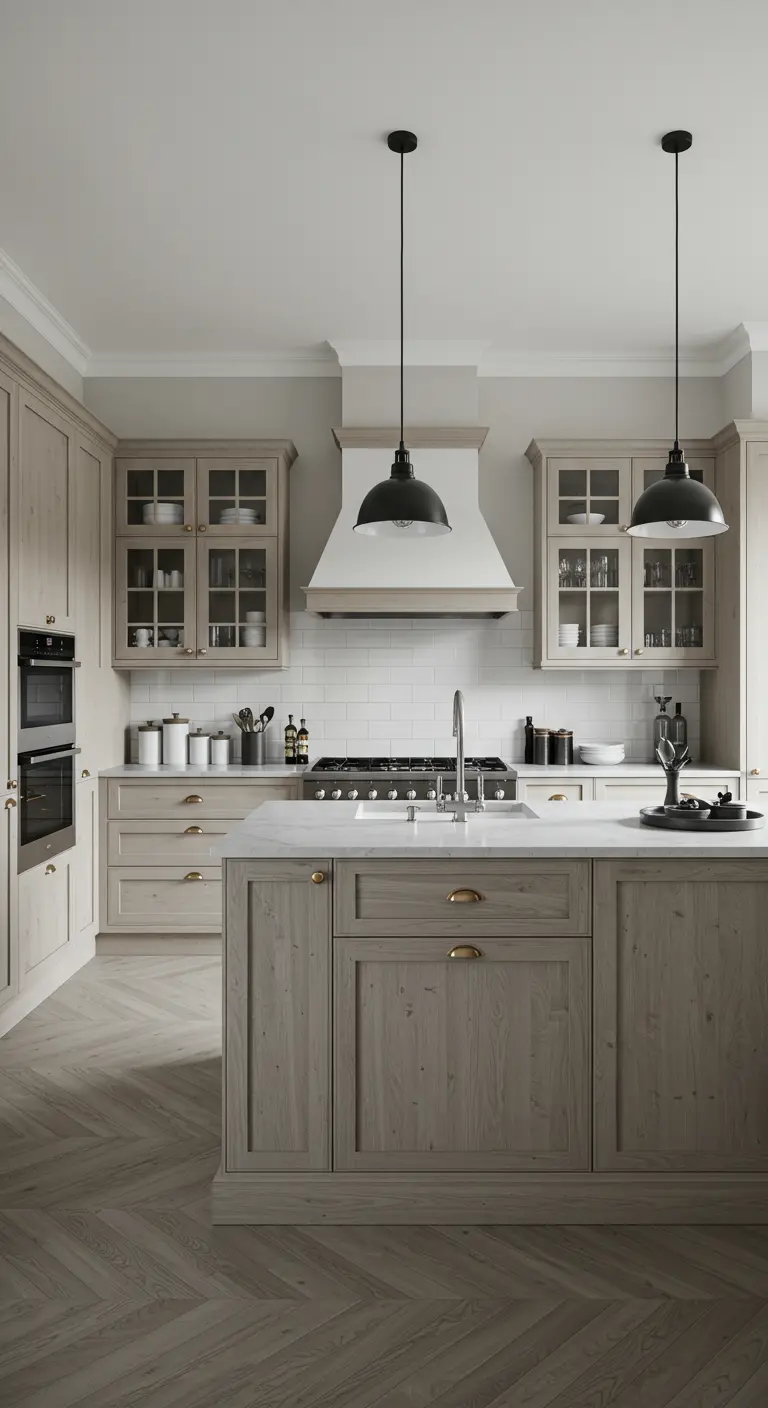
Japandi style can be beautifully interpreted through a more traditional lens.
Incorporate classic elements like glass-front upper cabinets and detailed moldings, but keep the overall feeling calm with a muted, grey-washed wood finish.
Adding a timeless pattern, like the herringbone or chevron floors seen here, introduces sophisticated movement and character that elevates the entire room.
This approach feels layered, elegant, and enduring.
16. Create Intimacy with a Sunken Dining Nook
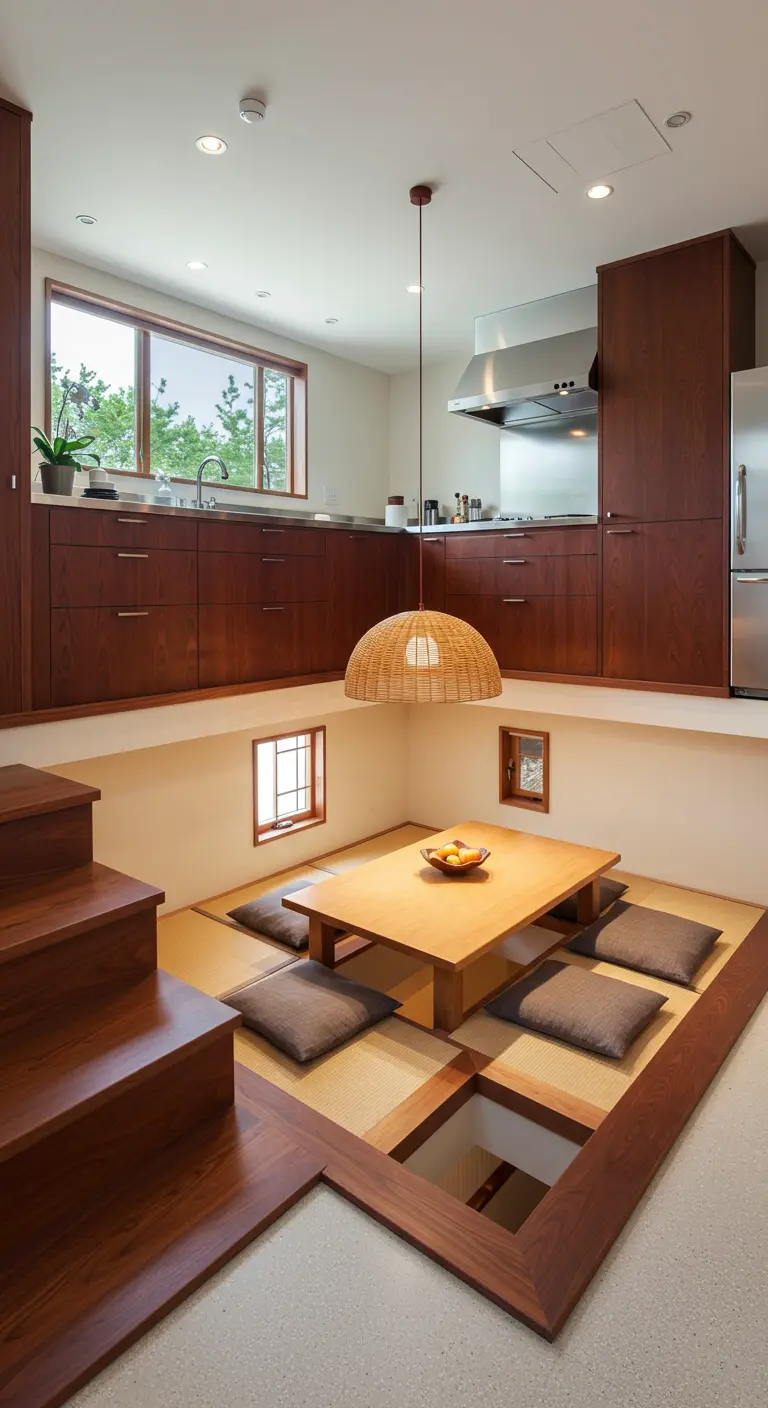
For an authentically Japanese architectural feature, consider a split-level design that incorporates a sunken dining table, or ‘horigotatsu’.
This design creates a distinct and intimate zone for meals, physically separating it from the bustle of the kitchen prep area.
It fosters a unique sense of closeness and comfort, turning everyday dining into a mindful ritual, a concept central to many Japanese-inspired minimalist spaces.
17. Anchor with a Warm Wood Island
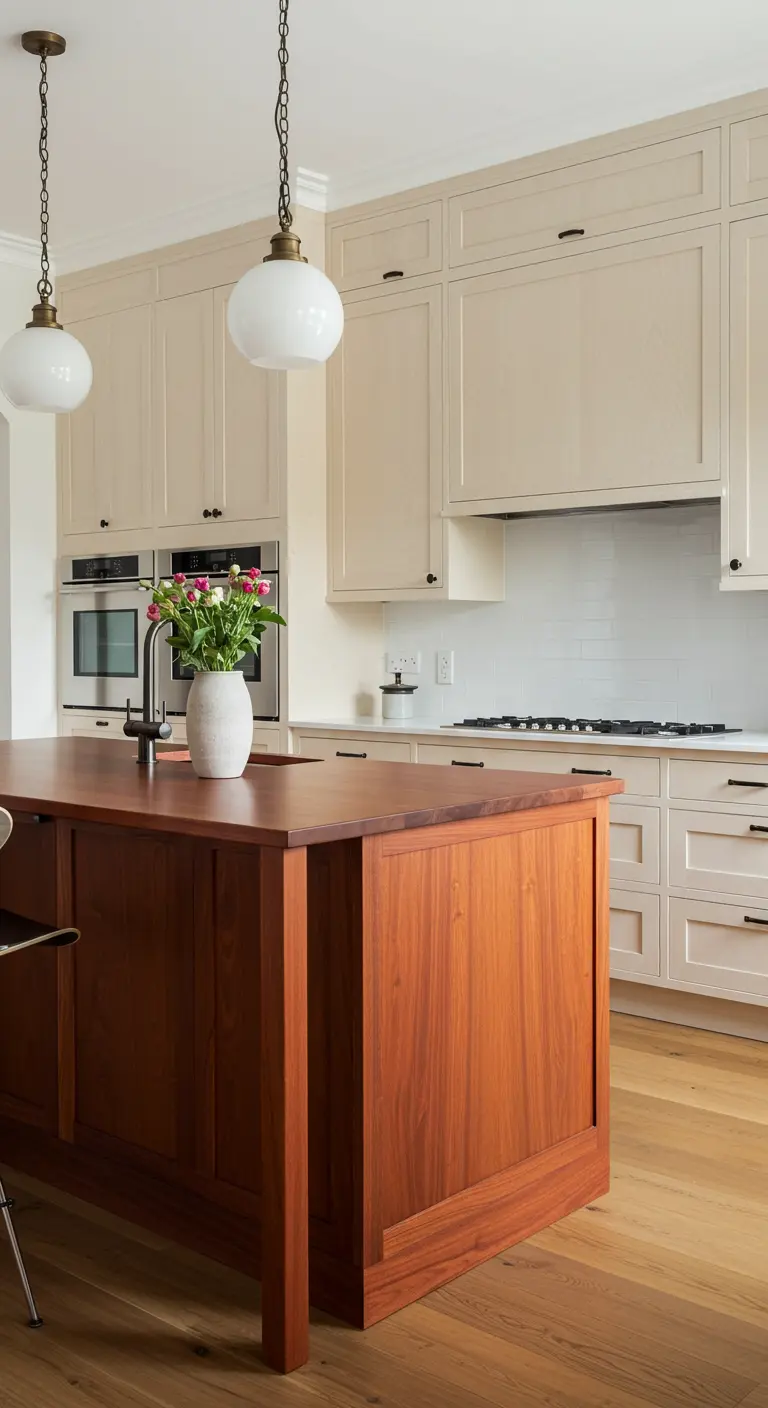
If your kitchen features perimeter cabinets in a pale, neutral color like cream or soft grey, create a strong focal point with a contrasting island.
Choosing a richer, warmer wood tone, such as teak or cherry, grounds the space and prevents the light colors from feeling washed out.
This contrast adds visual weight and character, giving the room a clear, inviting center and a touch of mid-century modern flair.
18. Embrace Architecture with a Wood-Clad Ceiling

Turn an architectural feature like a vaulted ceiling into the star of your kitchen by cladding it in natural wood.
This technique enhances the cozy, enveloping feeling of a Scandinavian cabin or a Japanese country home.
To keep the space from feeling too heavy, use a contrasting color for the base cabinets—like this soft sage green—and leave some walls painted white.
The exposed reclaimed wood beams add another layer of rustic structure.
19. Extend Your View with a Living Privacy Screen
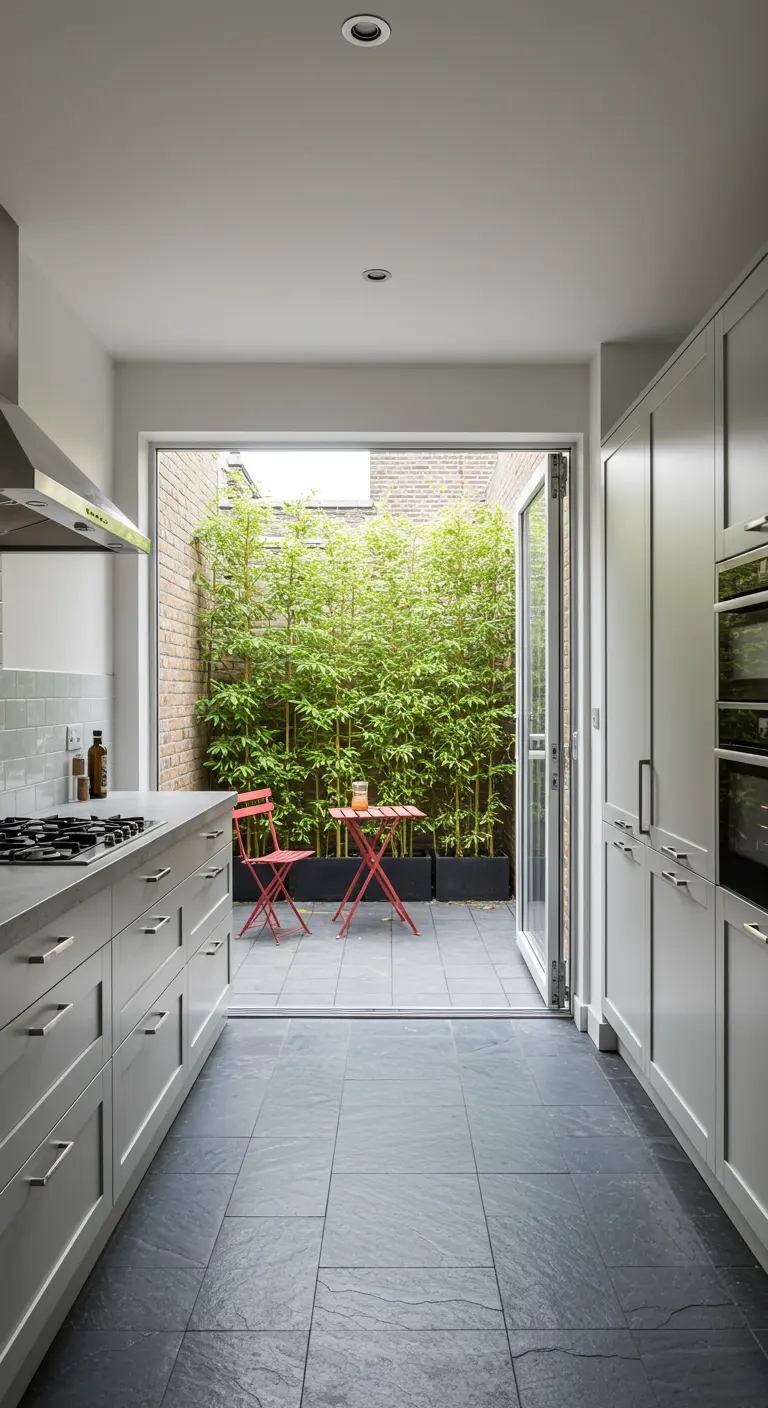
If your kitchen looks out onto a less-than-inspiring view, take control by creating your own.
A screen of tall bamboo planted in modern, rectangular containers offers a living wall of green that provides privacy and a beautiful, filtered light.
This is one of the most effective chic privacy screens you can create, turning a potential drawback into a serene, garden-like feature.
The pop of red from the bistro set adds a playful spark of energy.
20. Designate a Zone for Ritual and Stillness
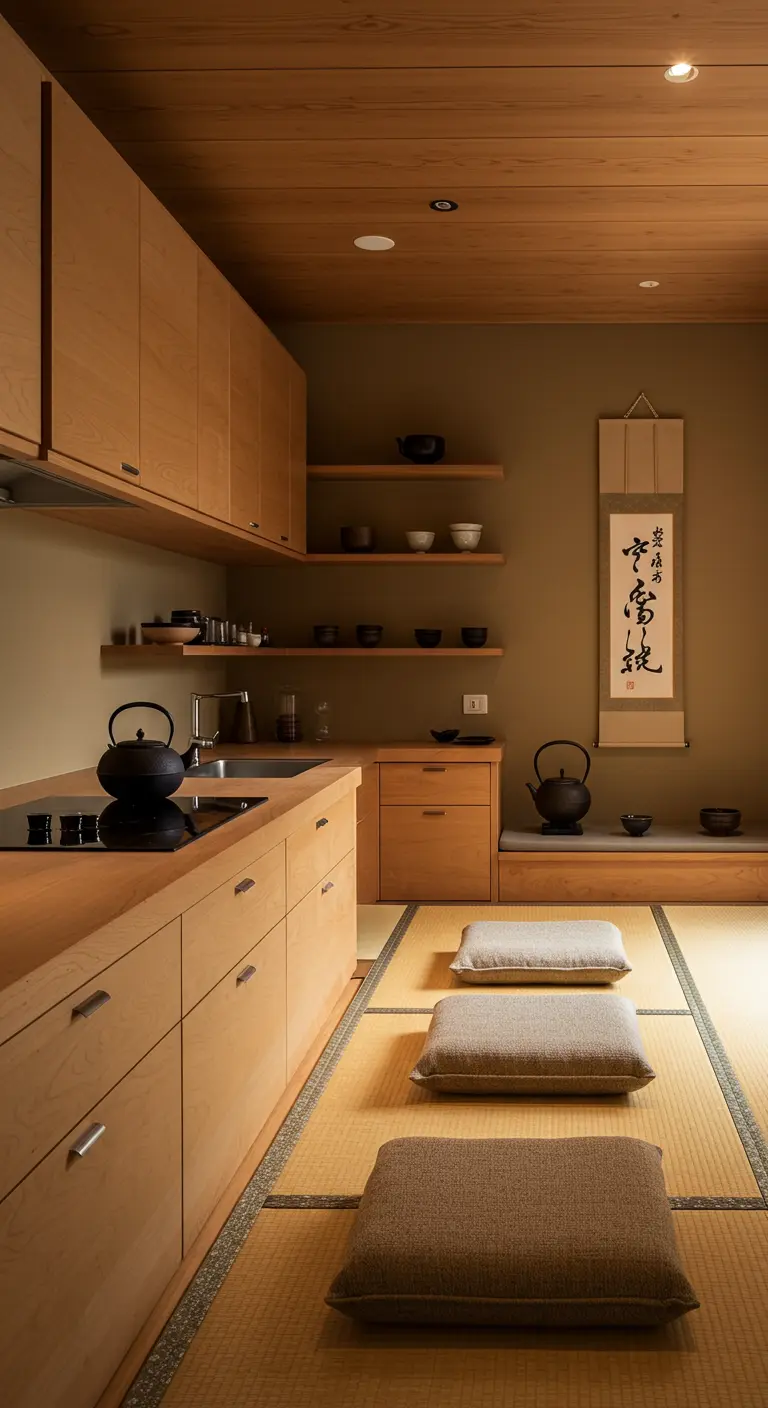
A kitchen can serve more than just our physical hunger; it can also be a place for quiet contemplation.
Consider dedicating a corner of your space to a calming ritual, like the Japanese tea ceremony.
The simple addition of tatami mats, low cushions, and minimalist shelving creates a distinct zone for mindfulness.
This thoughtful approach is the essence of creating Scandinavian-Japanese fusion homes—spaces that support a balanced and peaceful life.
